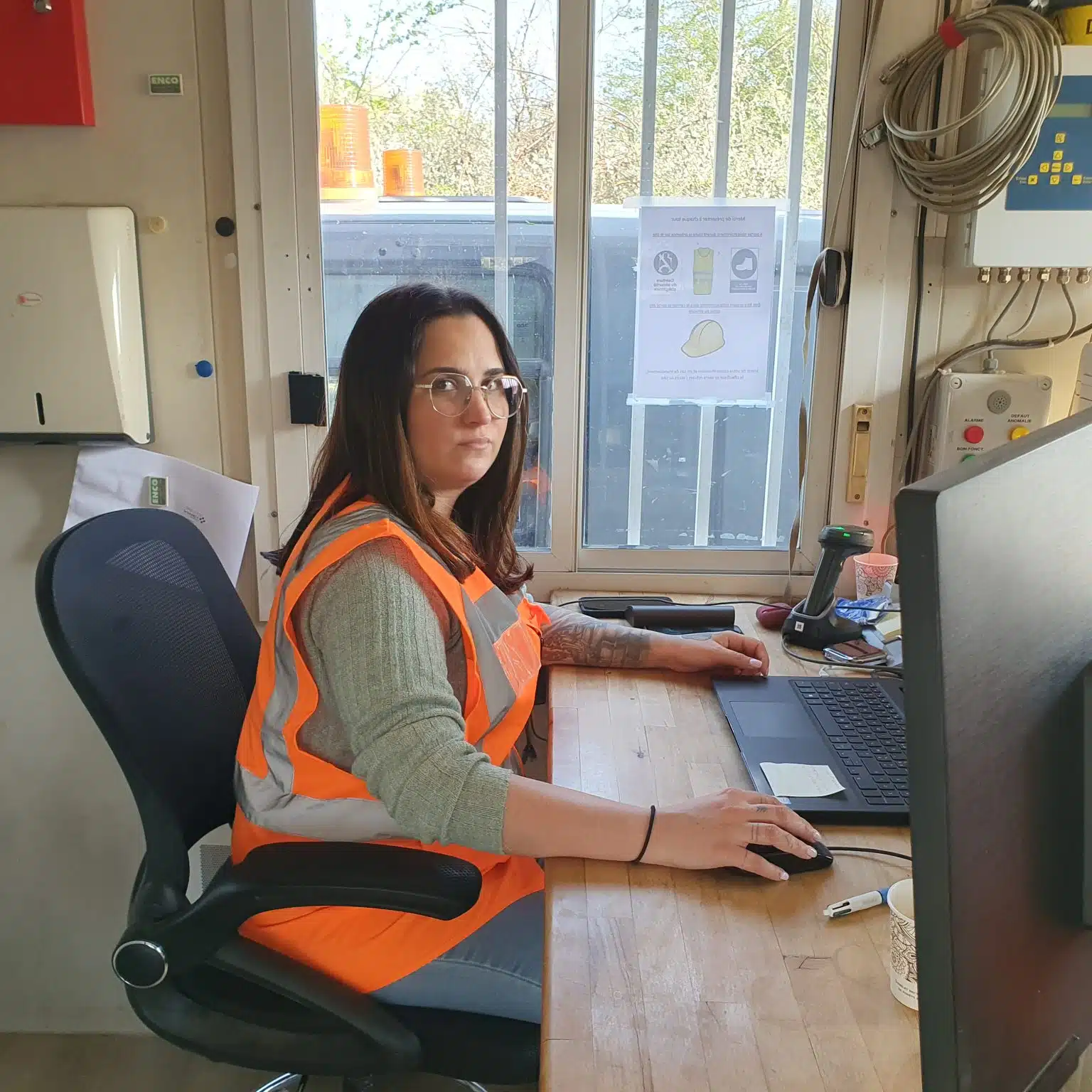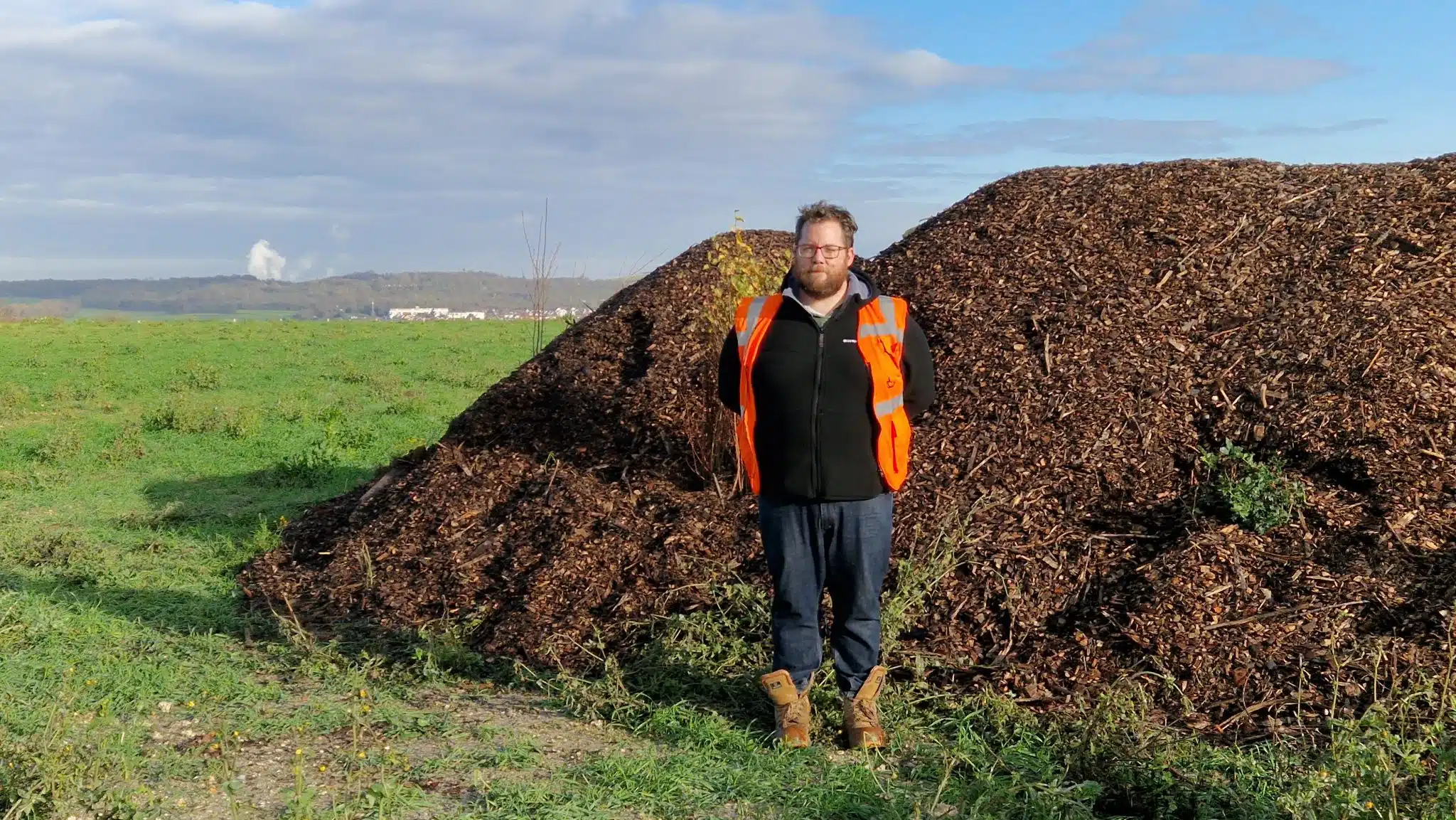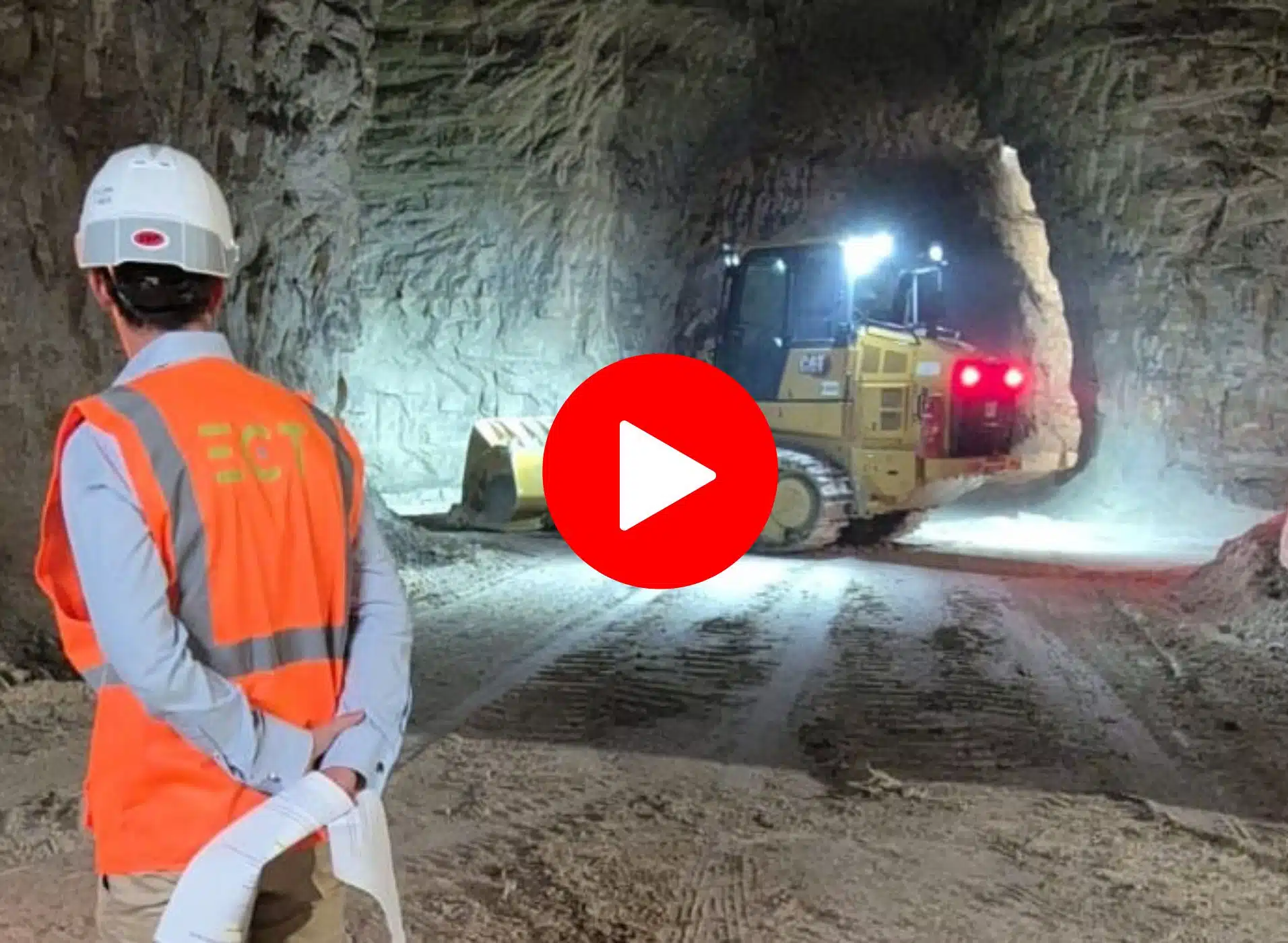As the first point of contact on ECT sites, the receiving agent plays a key role in controlling the traceability of inert soils and onsite safety requirements. Since 2016, Cynthia Boivin has embodied this mission with professionalism and exacting standards. Behind screens, gates and barriers, Cynthia validates the entry conditions of each truck. A job that requires rigor, responsiveness and adaptability. Here’s the story of a demanding yet friendly professional.
What does the day-to-day work of a receiving agent entail?
I’m the first person the drivers meet when they arrive. When the truck arrives, I check all the elements required to accept the load. I also make sure that the carrier’s safety protocol has been signed. You need to take the time to explain how the site works to drivers who are coming for the first time (schedules, traffic, instructions). This is an essential point: safety is not negotiable.
In the event of administrative irregularities on loading, missing equipment or overloading, the truck is refused. This guarantees the safety and traceability of the site’s soil.
What are the control stages on arrival of a truck?
The driver must first unload his load. Then he presents me with the transport voucher, generated when booking his passage. The voucher’s QR code is scanned into our business software, then I record the passage data: weight, excavation site mesh, unloading zone, truck registration.
At this stage, several checks are carried out to authorize the truck to access the site:
Inert soil quality
- Visual control of bin contents via cameras
- Detection of suspicious odors
- Verification of the validity of the transport order and the conformity of the DAP (declaration of prior acceptance) for the excavation site
- Video recording of license plate and load
- Verification that customer account is not blocked for commercial reasons
- Driver safety: Personal Protective Equipment (PPE – helmet, shoes, vest) must be worn, seatbelt fastened.
- Loading safety: no overloading
If everything is in order, the truck is allowed to enter. If not, the truck will turn back without being able to unload. These controls require regular exchanges with the land quality and sales departments.
What are the main challenges of your job?
Each site has its own particularities. My job is to make to ensure that everything runs smoothly. We need remain calm in all circumstances, even when refusing access. Lanaging truck flows is a daily challenge: we need to be reactive, efficient and avoid tension, particularly when there is an influx of trucks on site.
Another challenge is the language barrier. Many drivers are foreigners. I need to be able to pass on safety instructions clearly. I often use Google Translate to make sure the message is understood. Safety is non-negotiable, whatever the language.
Finally, I also need to be able to clearly explain the development project underway on the site. Because sometimes local residents come to ask questions or express concerns. My role is to listen, reassure and pass on information to the site manager.
Any memorable experiences you'd like to share?
The first time the radioactivity detector went off, I was surprised! The portal detects the presence of radioactive sources in loads. You have to apply the procedure rigorously and record all the data, Since then, it’s happened to me several times, and I’ve even been called “the black cat” on the sites! But today, I’m able to deal with the situation more easily, because in the majority of cases, these are drivers who have recently undergone a medical examination.



